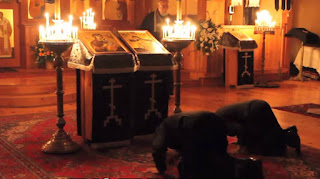Veneration vs. Worship: A Lesson in the Humor of Casuistry

When Romans Catholics and Eastern Orthodox say, "We are not worshiping Mary," and "We are not worshiping icons," the tragic reality is that too many will do X but call it Y. It is like watching them pour water into a cup while they insist on saying, "No, you are misled, I am just pouring water into the space above the cup, and it is only an accidental property of my pouring that it goes into the cup, and really the metaphysical substance of the cup is the matter itself, not the space qua space of the cup, and I am not pouring the water into the substance of the cup. You have been deceived into thinking I am pouring water into the cup." All one can say to this is, “Thy cup runneth over.” They retort, “Sir, you must be one of those deceived Protestants. In truth, I am not ‘pouring’ the water. We reserve a distinction that pouring is only true pouring when the pouring device has either a lip on the side or a spout. Clearly neither of those conditions are be...

